Graphic Action Art, Revolt and Anti-Fascism
International Encounter on Graphic Turn
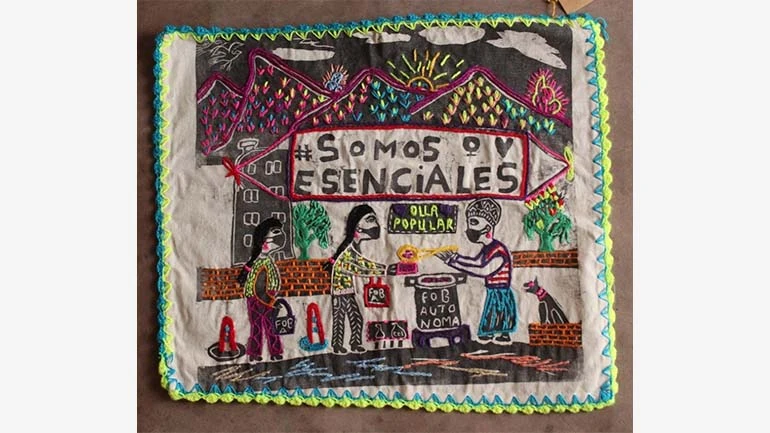
Held on 18 may 2022
This international encounter, setting out from Graphic Turn. Like the Ivy on a Wall, a collective exhibition stemming from a long research process driven by the Southern Conceptualisms Network, brings together researchers, artists and activists as it looks to foster exchanges to examine art and political graphic action art in Latin America, as much in its recent history as a present characterised by the return of authoritarianism and the loss of civil liberties.
The encounter pools different graphic action art tools and tactics from the street — understanding graphic art in an expanded sense, or more aptly as a burst — with initiatives ranging from collective sewing to cartography. The programme comprises tables to debate themes which intensify the curatorial concepts of the show and create a transversal composition among artists, curators, researchers and activists with a view to sharing different graphic art tools and strategies of dissemination and occupying streets.
A dialogue that seeks to find not only coincidences and affinities between historical cycles and the present day, but also tensions and latencies. Graphic art — like the ivy in the chorus of the well-known song “Volver a los diecisiete” (Being Seventeen Again), by Chilean singer-songwriter Violeta Parra — grows on walls and sprouts over and over. Just like life.
[dropdown]
Clara Albinati (Brazil) is a professor at the Pontifícia Universidade Católica in Minas Gerais, Belo Horizonte, and is a member of the Southern Conceptualisms Network. She works as a researcher and independent film-maker.
Sebastián Alonso Bessonart (Uruguay) is a professor at the University of the Republic, in Montevideo, Uruguay. Focusing on contemporary artistic and curatorial practices, he coordinates the CasaMario Project and has participated in numerous biennials and international exhibitions.
Carolina Barrero (Cuba) is an art historian, curator and activist. She has worked in different institutions and art galleries and has promoted actions of civic and peaceful resistance linked to the 27N group and San Isidro Movement.
Edén Bastida (Mexico) is a visual artist who holds a PhD in Art Theory and History from the University of Buenos Aires, with his research on underground Zapatista film-making noteworthy.
Gonzalo Castro-Colimil (Chile) is an artist and cultural agitator. He founded the Coordinator of Artistic Operations (COA) and is director of the ËFA Txawün residency and circuit of territorial experience.
Javier del Olmo (Argentina) is an architect and multidisciplinary artist. He is a co-founding member of the art-action collectives XI Ventanas (1996–2003), Mínimo9 (2000–2003), Arde! (2001–2012) and Artistas Solidarios (2013–2018).
David Feldman (USA) is a film-maker, editor and photographer. His works most notably include the documentary Los Olvidados. The Forgotten (2014) on the installation of Jay Lynn Gómez’s mural paying homage to migrants who have died attempting to cross the Mexican-US border.
Hugo Giménez (Paraguay) is a film-maker. He was awarded the IV DOCTV Latinoamérica Prize for Fuera de campo, and his film Matar a un muerto (Killing the Dead) was Paraguay’s nomination for the Goya Awards and Oscars in 2021, the same year he was also nominated for best Ibero-American fictional debut feature in the Platino Awards.
Sol Henaro (Mexico) is a researcher and curator. Her specialist field is the critical historiography of artistic practices from 1980 to the present day. Since 2010, she has been part of the Southern Conceptualisms Network and since 2015 she has curated Acervo Documental and overseen the Arkheia Documentation Centre at the Museo Universitario Arte Contemporáneo (MUAC) in Mexico.
Carlos Henríquez Consalvi (Venezuela) is the director of Museo de la Palabra y la Imagen, in El Salvador. He is also the founder of Radio Venceremo and has curated exhibitions on historical memory, culture and identity. He was awarded the International Prince Claus Award for Culture and Development.
Cristina Híjar (Mexico) is a professor in the fields of communication and politics and a visual arts researcher. She is part of the work group Art and Politics from the Latin American Council of Social Sciences (CLACSO) and the Híjar Collective, which focuses on aesthetic-political actions for historical memory.
Natalia Iguiñiz Boggio (Peru) is a visual artist, university lecturer, feminist activist and mum. Her work explores the construction of discourses around conceptions of women, sexuality, domestic work and maternity, as well as historical memory and the coloniality of power.
Ana Longoni (Argentina) is a writer and researcher at Argentina’s National Scientific and Technical Research Council (CONICET), where she explores the crossroads between art and politics in Latin America. She has also propelled the Southern Conceptualisms Network since it was founded, and from 2018 to 2021 she was director of the Museo Reina Sofía’s Public Activities Department.
Jay Lynn Gómez (USA) is an artist. Her work focuses on giving a voice to the migrant community in California and revealing their working conditions. Her work has been exhibited at institutions that include the National Portrait Gallery of the Smithsonian Institution (Washington D.C.) and the Museum of Latin American Art (MOLAA, Long Beach, California).
André Mesquita (Brazil) is a researcher who holds a PhD in Social History. He investigates the articulations between art, politics and activism, and is also a curator at the Museu de Arte de São Paulo Assis Chateaubriand (MASP) and a member of the Southern Conceptualisms Network.
Fernando Miranda (Uruguay) is a professor and researcher at the University of the Republic, in Montevideo, Uruguay. He currently coordinates the Research Nucleus of Visual Culture, Education and Identity Construction in the Fine Arts Institute at the same university.
Guillermina Mongan (Argentina) is an art historian, teacher, researcher, curator and artist. She is a member of the Southern Conceptualisms Network, the collective Frente Sudaka, Serigrafistas Queer— where she also coordinates its ASK archive — and Cromoactivismo.
Alberto Nanclares (Spain) is a visual artist, urban activist, architect and DJ. He was among those driving forward the Graphic Liberation of Madrid Movement and, since 2001, has been a founding member of the Basurama collective.
Yanelys Núñez Leyva (Cuba) is a curator and feminist activist. She is a member of the San Isidro Movement and co-founder of the Museo de la Disidencia en Cuba (MDC) cultural platform.
Elva Peniche Monfort (Mexico) is a researcher, teacher, curator and archive manager. Her interests encompass the crossroads between archive, photography and Latin American artistic practices in the second half of the twentieth century.
Juan Pablo Pérez (Argentina) is a teacher, artist and curator. He coordinates the Department of Visual Ideas from the “Floreal Gorini” Cultural Centre of Cooperation, is part of the Southern Conceptualisms Network and participated in the archive-show Resistencias Tipográficas.
Suset Sánchez Sánchez (Cuba) is a curator, art critic and researcher. She has been a research fellow in the Museo Reina Sofía’s Exhibitions Department and Spain’s Royal Academy in Rome, as well as curating the Intermediæ programme of activities in Matadero Madrid.
Mariela Scafati (Argentina) is an artist. Her work experiments with Geometric Abstraction, modern design, performance and alternative media. She is a member of Serigrafistas Queer and Cromoactivismo, and her shows most notably include ¡Teléfono! En diálogo con Lidy Prati (Centro Cultural Borges, 2009) and Handcuff Secrets (Floating Island stand at Art Basel Miami, 2017).
Sylvia Suárez (Colombia) is a professor in the Visual Arts Department at the Pontificia Universidad Javeriana, Bogotá, and a curator and art historian. She is a member of the Taller Historia Crítica del Arte (Critical History of Art Workshop) research group and the Southern Conceptualisms Network.
Mabel Tapia (Argentina) is deputy artistic director of Museo Reina Sofía.
Todo por la praxis is an artistic collective made up of visual artist, researcher and educator Jo Muñoz (Chile) and architect and artist Diego Peris López (Spain). Its concerns spotlight dissidences as political forms of resistance which are able to build other possible imaginaries.
César Valencia (Chile) is a visual artist. He was previously a member of the Piñen collective, Illicit Association (2010–2018) and develops the Medicinal and Emotional Graphic Production graphic archive.
Paulina E. Varas (Chile) is an academic and associate researcher at the Andrés Bello University in Santiago de Chile. She is currently developing the project Art, Politics and Women from Chile, a genealogy of/for/with the social and subjective body, with support from the Chilean National Agency of Research and Development.
Hugo Vidal (Argentina) is a visual artist. His works centred on political art and activism have been included in projects such as the 8th Meeting of European and Latin American Museums. Retracing Networks (Museo Reina Sofía and ARCOmadrid, 2019) and the archive-show Resistencias Tipográficas (“Floreal Gorini” Cultural Centre of Cooperation 2015).
[/dropdown]
Programme
Wednesday, 18 May 2022
10:30am Presentation
—Conducted by Ana Longoni and Mabel Tapia, with a video intervention by the La Voz de la Mujer Graphic Art Collective
11am – 2pm Untimely Memories
Round-table discussion
Speaking of memories inside the framework of graphic art practice points to a genealogy of the relationship between art and politics, comprising graphic action art hailing from divergent eras and places. The untimely can be understood as that which bursts forth in time to subvert the order of life, and certain graphic actions can be taken as signs of an inverted or dislocated temporality. In an untimely fashion, they strike up a dialogue between experiences and knowledge, creating new relationships and meanings between the present, past echoes and impulses towards the future.
Coordinated by: Sol Henaro
Participants: Sebastián Alonso Bessonart, Hugo Giménez, Cristina Híjar, Fernando Miranda, Alberto Nanclares and Juan Pablo Pérez
4:30pm - 6:30pm Graphic Action Art: From Revolution to Repression
Round-table discussion
Intellectuals’ relationships with politics and their active participation in collective processes to transform social reality through revolutionary channels have historically led to a field of tensions: from enthusiasm, solidarity and militant commitment to subsequent disillusion before the persecution and repression of critical thought by the State and the exercise of political violence on bodies, all of which is reflected in symbolic production. These are cyclical disputes in Latin American history that have occurred since the Cuban Revolution. This round-table discussion ignites dialogue between the oscillating and complex place of graphic action art in Cuba and Nicaragua.
Coordinated by: Suset Sánchez Sánchez
Participants: Carolina Barrero and Yanelys Núñez Leyva
6:30 - 8:30pm Neither True Nor False
Performance and Conversation
Since 2013, Argentinian artist and activist Mariela Scafati has been performing Neither True Nor False, putting forward an exercise of memory which revisits the past twenty years of her committed practice in serigraph activism, in which she has driven collective initiatives such as the Taller Popular de Serigrafía and Serigrafistas Queer. After the performance, Scafati will discuss this journey (and the poetic operations invoking it) with artist and curator Guillermina Mongan, who has supported and written about the action.
Participants: Guillermina Mongan and Mariela Scafati
Thursday, 19 May 2022
11am – 2pm Graphic Bodies: Stencils for Street Choreography
Round-table discussion
Street-based graphic art practices cannot be considered externally from the bodies printing and bearing them. There is little more fragile than a card stencil that will be used repeatedly to paint a wall, surface, T-shirt or skin as a support to multiply its image. Graphic bodies trace their polyphonic and talking chorography in the streets.
Coordinated by: Sylvia Suárez
Participants: Clara Albinati, Gonzalo Castro-Colimil, Elva Peniche Monfort and Paulina E. Varas
4pm – 6:30pm Border-crossings: Collective Practices and Reinventing the Political
Round-table discussion
The notion of cross-border graphic art refers to the knowledge and bodies of resistance that cross borders (geopolitical frontiers and borders between knowledge) with the disobedience of successive steps and the power of collective walking, weaving alliances, tackling precariousness in life and tacking disobedient memories under an open sky.
Coordinated by: André Mesquita
Participants: Carlos Henríquez Consalvi, Todo por la praxis collective, Javier del Olmo and César Valencia
7pm – 9pm Anti-fascist Graphic Activism in the Present
Assembly
This forum of assembly seeks dialogue between different contemporary experiences of anti-fascist and anti-patriarchal graphic art and art-making (visual and performance) in public spaces that face an increasingly more excluding and violent order. Via short interventions by six activist artists from different contexts, a space is created to share experiences between researchers, artists and activists participating in the collective project Graphic Turn — and between different local and Latin American collectives and activists — to imagine modes of sharing knowledge and weaving collaboration networks.
Coordinated by: Ana Longoni
Participants: Eden Bastida, David Feldman, Natalia Iguiñiz Boggio, Jay Lynn Gómez and Hugo Vidal
Organised by
Museo Reina Sofía and Red Conceptualismos del Sur
Collaboration
Mexican Embassy in Spain, Cultural Diplomacy of Mexico, the Cultural Institute of Mexico in Spain and hablarenarte
With the support of
Chile’s National Agency of Research and Development (Proyecto Fondecyt/ANID nº 11201004)
En el marco de
Participants
Participants
Más actividades
![Metahaven, The Sprawl: Propaganda about Propaganda [La diseminación: propaganda sobre propaganda], 2015, película](https://recursos.museoreinasofia.es/styles/small_landscape/public/Actividades/interfaz_emotiva_0.jpeg.webp)
EMOTIVE INTERFACE. The Films of Metahaven
Thursday, 27, Friday, 28, and Saturday, 29 November 2025 – check times
The Museo Reina Sofía and the Márgenes International Film Festival in Madrid, here in its fifteenth edition, present this series devoted to the artist collective Metahaven. The programme is framed inside the working strand both institutions started in 2024, focusing on an exploration of contemporary audiovisual narratives, a hybridisation of languages and the moving image as a tool for practising critical gazes on the present. Emotive Interface. The Films of Metahaven comprises two sessions of screenings and a masterclass delivered by the collective, centring on the relationship between the internet, technology, time and the moving image. All sessions will be presented by the artists.
The work of Metahaven — Dutch artist duo Vinca Kruk and Daniel Van der Velden — encompasses graphic art, video, installations, writing and design around urgent issues related to governance, identity, power and transparency in the digital age. Thus, their practice stands at the crossroads of art, film and critical thought, as they employ visual language as a tool to explore the tensions between technology, politics and perception, their practice combining the rigour of the visual essay and a strong poetic component, where graphic design, digital animation and documentary material fuse into dense, emotionally ambiguous compositions that speak of post-digital romanticism through an allegorical formulation. The spotlight of this series shines brightly on some of Metahaven’s recent works, for instance The Feeling Sonnets (Transitional Object) (2024), in which they examine language, poetry and digital time, and on The Sprawl (Propaganda About Propaganda) (2015), an essay which explores how the internet and social media have radically altered the relationship between truth, power and perception. Finally, the duo’s masterclass is set forth here as a survey of the main themes explored by both artists.
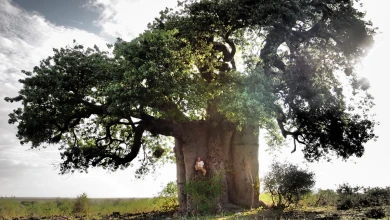
Francisco López and Barbara Ellison
Thursday, 11 December - 8pm
The third session in the series brings together two international reference points in sound art in one evening — two independent performances which converse through their proximity here. Barbara Ellison opens proceedings with a piece centred on the perceptively ambiguous and the ghostly, where voices, sounds and materials become spectral manifestations.
This is followed by Francisco López, an internationally renowned Spanish sound artist, who presents one of his radical immersions in deep listening, with his work an invitation to submerge oneself in sound matter as a transformative experience.
This double session sets forth an encounter between two artists who, from different perspectives, share the same search: to open ears to territories where sound becomes a poetic force and space of resistance.
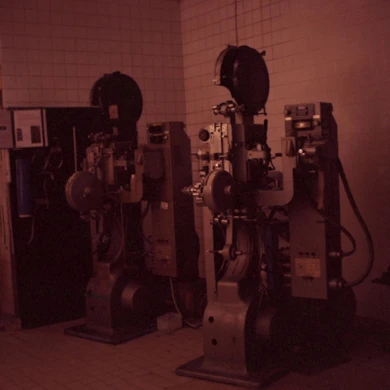
Long Live L’Abo! Celluloid and Activism
4, 5, 6 DIC 2025
L’Abominable is a collective film laboratory founded in La Courneuve (Paris, France) in 1996. It came into being in response to the disappearing infrastructures in artisan film-making and to provide artists and film-makers with a self-managed space from which to produce, develop and screen films in analogue formats such as Super 8, 16mm and 35mm. Anchored in this premise, the community promotes aesthetic and political experimentation in analogue film opposite digital hegemony. Over the years, L’Abominable, better known as L’Abo, has accompanied different generations of film-makers, upholding an international movement of independent film practices.
This third segment is structured in three sessions: a lecture on L’Abo given by Pilar Monsell and Camilo Restrepo; a session of short films in 16mm produced in L’Abo; and the feature-length film Une isle, une nuit, made by the Les Pirates des Lentillères collective.
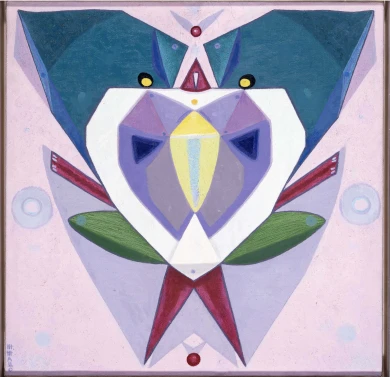
Estrella de Diego Lecture. Holding Your Brain While You Sleep
Wednesday, 3 December 2025 – 7pm
Framed inside the Museo Reina Sofía’s retrospective exhibition devoted to Maruja Mallo, this lecture delivered by Estrella de Diego draws attention to the impact of the artist’s return to Spain after her three-decade exile in Latin America.
Committed to values of progress and renewal in the Second Republic, Mallo was forced into exile to Argentina with the outbreak of the Civil War and would not go back to Spain to settle definitively until 1965 — a return that was, ultimately, a second exile.
Mallo saw out her prolific artistic trajectory with two impactful series: Moradores del vacío (Dwellers of the Void, 1968–1980) and Viajeros del éter (Ether Travelers, 1982), entering her most esoteric period in which she drew inspiration from her “levitational experiences” of crossing the Andes and sailing the Pacific. Her travels, both real and imaginary, became encounters with superhuman dimensions.
In parallel, her public persona gained traction as she became a popular figure and a key representative of the Generation of ‘27 — the other members of which also started returning to Spain.
This lecture is part of the Art and Exile series, which seeks to explore in greater depth one of the defining aspects of Maruja Mallo’s life and work: her experience of exile. An experience which for Mallo was twofold: the time she spent in the Americas and her complex return to Spain.
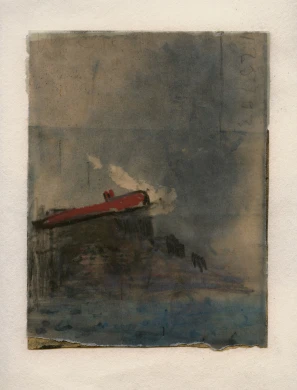
Juan Uslé. That Ship on the Mountain
Tuesday, 25 November 2025 – 7pm
Ángel Calvo Ulloa, curator of the exhibition Juan Uslé. That Ship on the Mountain, engages in conversation with artist Juan Uslé (Santander, 1954) in the Museo’s Auditorium 400 to explore in greater depth the exhibition discourse of this anthological show spanning four decades of Uslé’s artistic career.
The show casts light on the close relationship Uslé’s work bears to his life experiences, establishing connections between different stages and series which could ostensibly seem distant. Framed in this context, the conversation looks to explore the artist’s personal and professional journey: his memories, experiences of New York, his creative process, conception of painting, and ties with photography and film, and the cohesiveness and versatility that characterise his art. Key aspects for a more in-depth understanding of his artistic sphere.
The conversation, moreover, spotlights the preparatory research process that has given rise to this exhibition to grant a better understanding of the curatorial criteria and decisions that have guided its development.
These inaugural conversations, part of the main working strands of the Museo’s Public Programmes Area, aim to explore in greater depth the exhibition narratives of the shows organised by the Museo from the perspective of artists, curators and specialists.
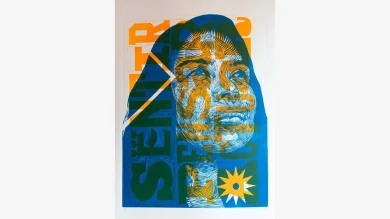
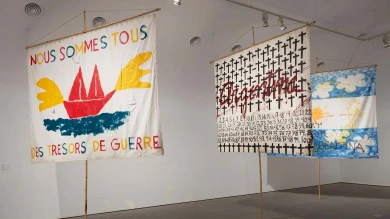



![Miguel Brieva, ilustración de la novela infantil Manuela y los Cakirukos (Reservoir Books, 2022) [izquierda] y Cibeles no conduzcas, 2023 [derecha]. Cortesía del artista](https://recursos.museoreinasofia.es/styles/small_landscape/public/Actividades/ecologias_del_deseo_utopico.jpg.webp)
![Ángel Alonso, Charbon [Carbón], 1964. Museo Reina Sofía](https://recursos.museoreinasofia.es/styles/small_landscape/public/Actividades/perspectivas_ecoambientales.jpg.webp)